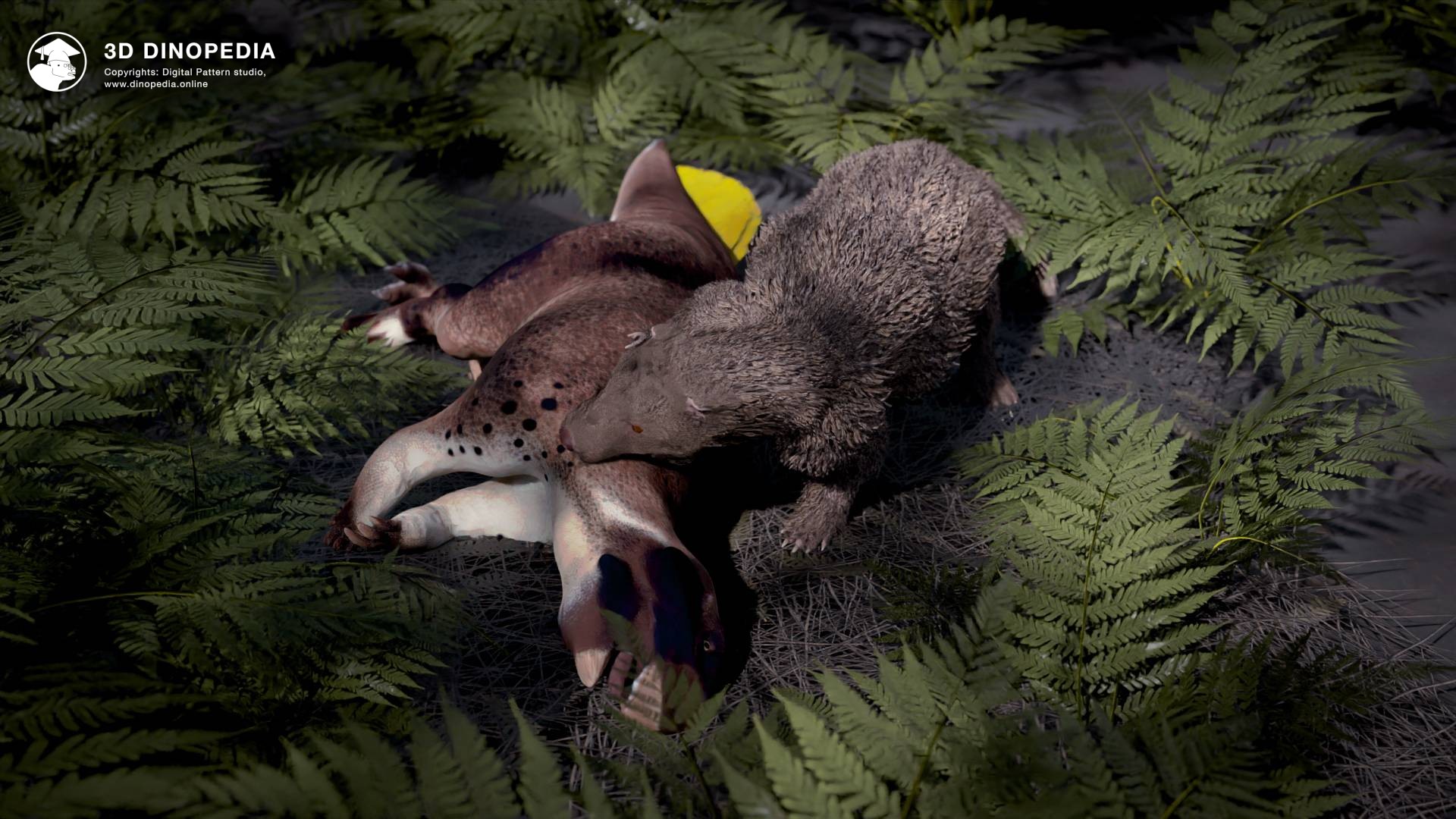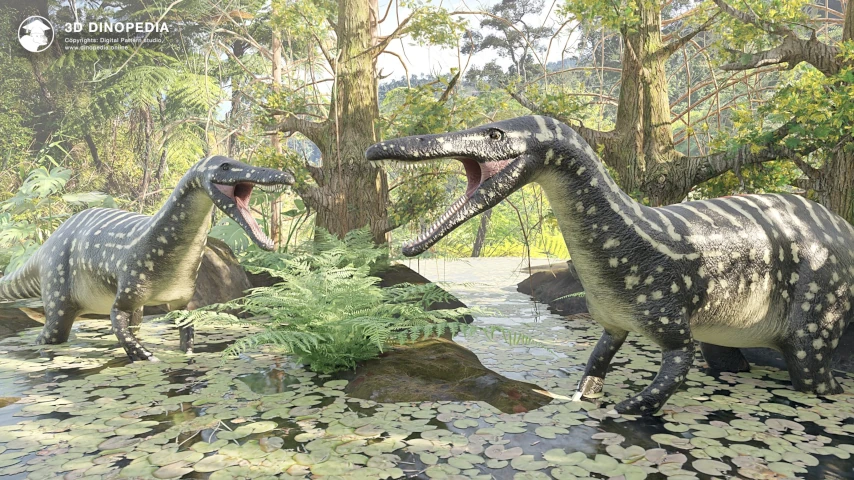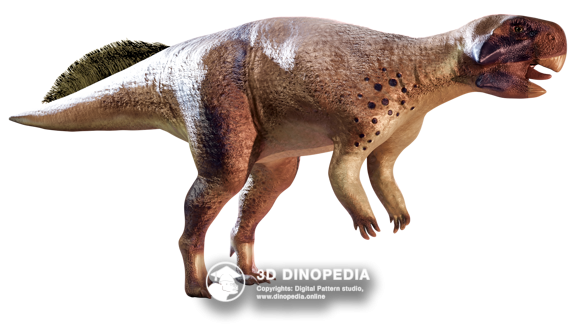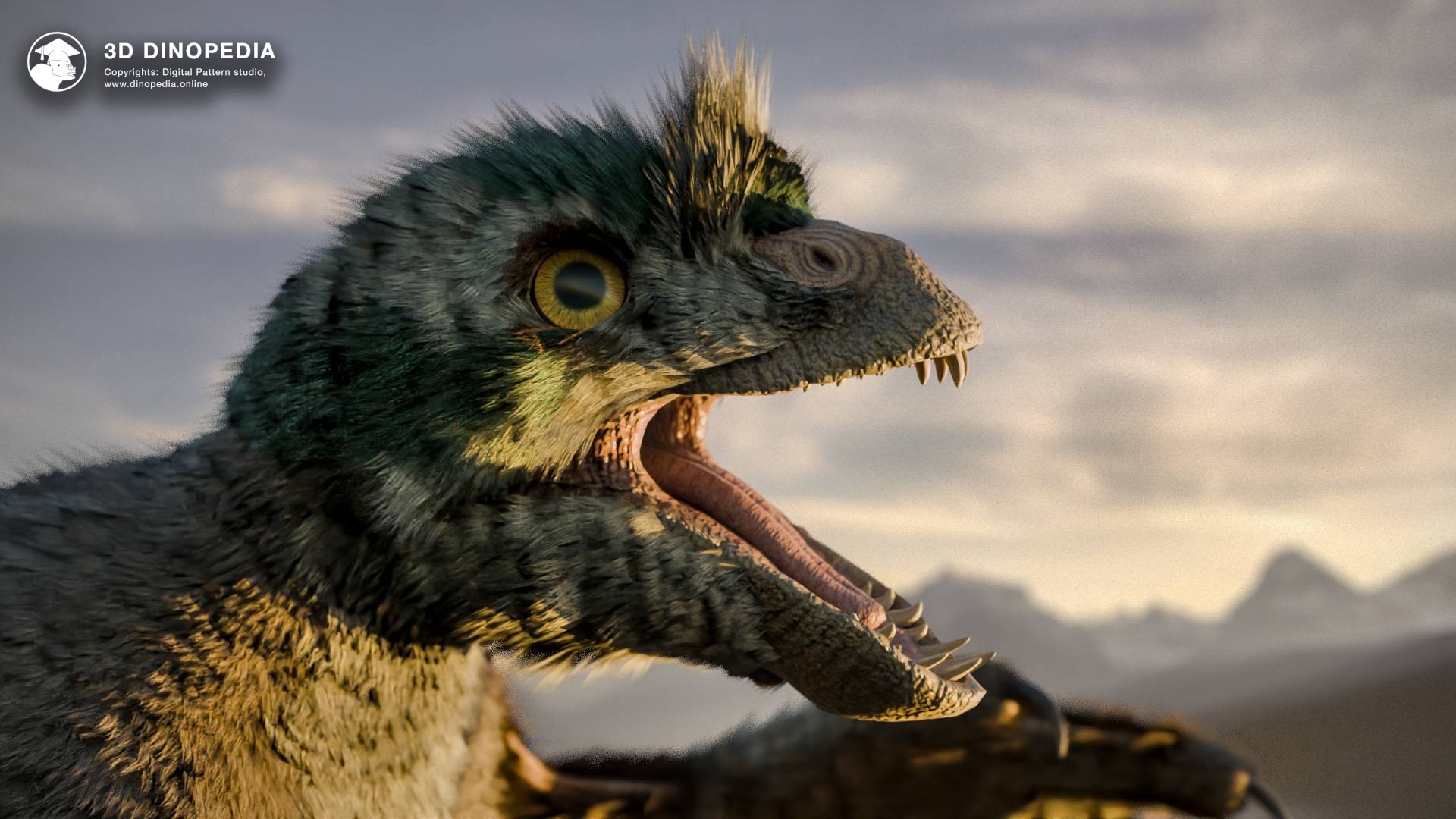Dinosaurs and Mammals: A Fossilized Clash
01.02.2024 05:14
2566 views

Dinosaurs dominated the Earth for approximately 170 million years. And almost all this time, our distant ancestors - mammals - lived alongside them.
Adapting to life in a world of dinosaurs, these mammals were forced to become small and inconspicuous, specializing in hunting insects to avoid competition with the giant lizards. Their miniature sizes allowed them to successfully create shelters in the form of burrows and hide in them from the predatory teeth of primitive lizards.
In response to the continuous threat from large reptiles, mammals adopted a predominantly nocturnal lifestyle. This led to the loss of color vision, which became unnecessary in the dark, explaining the limited color perception in most mammals to this day. Primates, including humans, are an exception, having regained the ability to see color, though not as developed as in birds.
In the darkness, smell and hearing became critically important, leading to their significant enhancement in mammals. The development of hearing stimulated the appearance of external ears, noticeable in most modern animals, and the improvement of smell contributed to the development of the olfactory part of the brain and, consequently, the overall development of the brain. Moreover, according to some scientists, the constant threat from predatory reptiles forced mammals to reproduce at an early age, although their lifespan remained low due to frequent predation. This, in turn, did not contribute to the development of genes responsible for longevity, explaining why mammals, in general, live shorter lives than birds and some reptiles. Thus, dinosaurs had a noticeable influence on the evolution of mammals, reducing their lifespan and loss of color vision, but at the same time stimulated the improvement of smell, hearing, and brain development.
In ancient times, when most mammals were no larger than the modern shrew, there were exceptions that reached the size of modern dachshunds. Such representatives, like Repenomamus from the early Cretaceous period and Didelphodon from the late Cretaceous, stood out for their impressive sizes, reaching about one meter in length. These mammals adapted to changes in their diet; insects alone could no longer satisfy their already sizable bodies. They became hunters, directing their appetite towards larger prey - lizards, snakes, small crocodiles, birds, and even young dinosaurs. Approximately 126-124 million years ago, in the territory of modern China, one such Repenomamus made a remarkable act by swallowing a dinosaur chick - Psittacosaurus whole. This historic meal was discovered by paleontologists millions of years later as a skeleton of the predator with the remains of the chick in its stomach area - a find undoubtedly valuable for science.
Psittacosaurus, known as parrot dinosaurs, were small, herbivorous creatures, only 1.5-2 meters long, without impressive defensive attributes except for small protrusions on the face and a beak, which served as their main means of defense. Living in herds, they could withstand dangers, and their protective coloration - a brown back with black spots - helped camouflage among forest vegetation. Despite this, young individuals were particularly vulnerable, and although parents tried to protect them, predators sometimes managed to catch them off guard and snatch a chick right from under their noses.
The discovery of a fossil in which Repenomamus, a small predatory mammal, contains remains of a Psittacosaurus, was already extremely unusual in itself. Nonetheless, in 2023, the world community was stunned by an even more remarkable find. At the Canadian Museum of Nature in Ottawa, Jordan Mallon and his team conducted a study of a unique fossil specimen found in the Chinese province of Liaoning, which is also about 125 million years old. This find presented the skeletons of Psittacosaurus (Psittacosaurus lujiatunensis) and Repenomamus (Repenomamus robustus) in exceptional preservation. In this case, the Psittacosaurus was an adult individual, reaching 1.2 meters in length and weighing about 10.6 kilograms, whereas Repenomamus was a young predator, only 0.5 meters long and weighing 3.4 kilograms. The skeletons were found in almost perfect condition, with the Psittacosaurus lying on its side, and Repenomamus, which had climbed onto its body, holding the dinosaur's jaw with a paw and sinking its teeth into its ribs.
Researchers suggest that Repenomamus attacked the Psittacosaurus and, ultimately, both died as a result of a volcanic eruption. No traces of other predators were found on the Psittacosaurus skeleton, supporting the theory that Repenomamus managed to knock the dinosaur down and began eating it while still alive. This situation demonstrates the predator's amazing ability to overcome prey significantly larger and heavier than itself, reminiscent of how cheetahs can hunt gnus, whose weight is two to three times their own.
This find has opened our eyes to the fact that mammals could become hunters of even large dinosaurs. However, scientists' opinions on this matter diverge. For example, Hans Larsson from McGill University proposed the hypothesis that Repenomamus fed on an already dead Psittacosaurus. At the same time, some paleontologists have expressed doubts about the authenticity of the find, pointing to the excessively good condition of the skeletons and their unusual position, which, in their opinion, could indicate forgery. Unfortunately, forgeries are a reality that paleontological science sometimes encounters.
Nevertheless, future research will determine the true nature of this fossil - whether it is a masterfully made forgery, a scavenging scene, or a frozen-in-time clash between two extinct beings. For now, we have the unique opportunity to admire magnificent three-dimensional models of the skeletons, muscles, and skin of Repenomamus and Psittacosaurus. These models, as well as extensive information about these beings, can be found in the dinosaur section of the "3D Dinopedia: Paleontology" app. Please note that we have updated the Repenomamus model in accordance with the latest scientific data on this species, making it look almost real!
Link to the study dedicated to the described fossil: Gang Han et al. An extraordinary fossil captures the struggle for existence during the Mesozoic // Scientific reports 13, 11221 (2023)
Discussions







{{ count }} comments
You must login to write a comment